Fostering Future Environmental Leaders: South Carolina’s Boards and Commissions Fellowship Program Launch
May 14, 2024
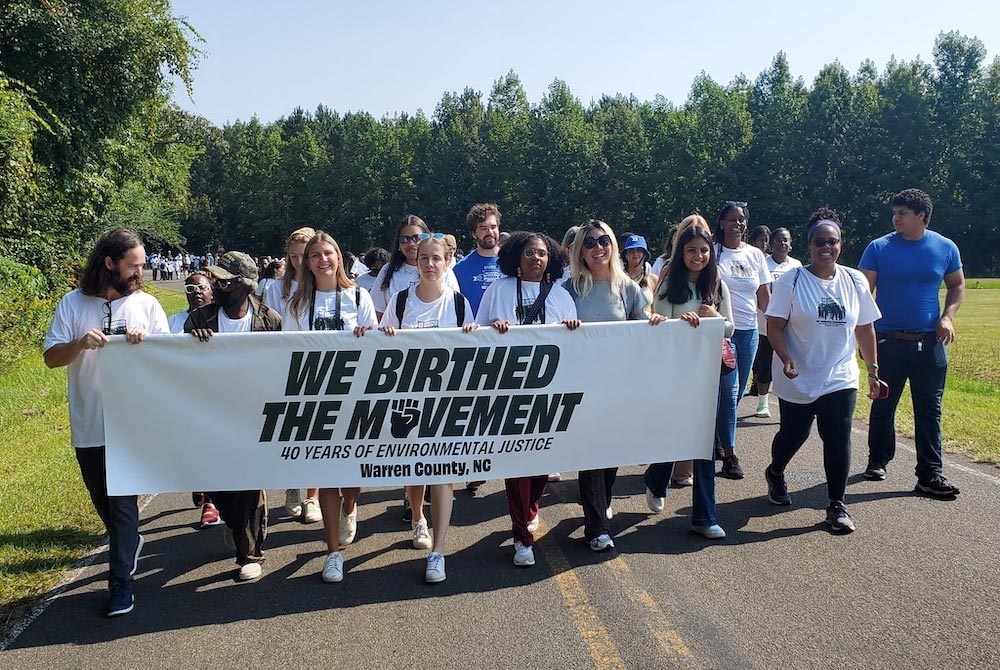 Oral history students lead a commemorative march in Warren County, North Carolina in September 2022. Credit: Southern Documentary Project. Courtesy of EJ Oral History Project
Oral history students lead a commemorative march in Warren County, North Carolina in September 2022. Credit: Southern Documentary Project. Courtesy of EJ Oral History Project
As a part of Black Girl Environmentalist’s Reclaiming Our Time Campaign, LCV Education Fund partnered with Cameron Oglesby, project lead for the Environmental Justice Oral History Project, to produce a short content series on the power of storytelling.
The National African American History Museum in DC recently hosted a workshop on arts and culture during the Civil Rights era. This session, in collaboration with the oral history and archiving project SNCC Digital Gateway, used video and personal narratives from some of the original youth organizers of the Civil Rights Movement to speak to the process of protest.
The stories told were hard to hear. They were of beatings and of people unsure if they would spend their next day at home, in jail, or alive at all. They were stories of 18-year-olds, 19-year-olds, early 20-year-olds congregating between school and personal responsibilities to advocate for Black folks’ right to vote in the U.S. South. The workshop left some people crying. But it also left people inspired.
The young people of the Student Nonviolent Coordinating Committee (SNCC) and similar justice congregations used song, photojournalism, comic illustration, and more to further a cause that, without these strategic communications, might have remained hidden by an unjust system. Story was used to get the plight of Southern segregation and voter suppression out of the South and in front of the rest of the country. And now their oral histories sit preserved as a testament to what it means to be a Justice organizer, for the next generation to peruse.
If you look at the youth sit-in and voting rights movements of the 1960s, you’ll notice congruencies between their strategies for communication and that of later movements – in particular the Environmental Justice Movements of the 1970s and 1980s.
In Warren County, the birthplace of the Environmental Justice Movement, the movement started with songs, with story, and with black and white photos. For six weeks in 1982, men, women, and young children marched the road from Coley Springs Baptist Church to stop the placement of a toxic waste landfill in their predominantly Black community. This was not the first instance of environmental racism in the U.S., but it garnered national attention through photos highlighting the passion and the impenetrability of this county.
The young photographer, Jenny Labalme, was a student at Duke who made trips to Warren County just to capture the heart-wrenching scenes of children lying in the road in the fight for their rights. She has said that it was the songs — the chants so similar in tone and wording to the chants of the SNCC activists and Civil Rights movement 20 years prior — that stuck out first and most as she was documenting the protests. Her photos helped elevate the Warren County story to national prominence and are now enshrined in history, showcasing one of the most famous examples of civil disobedience in connection to environmental harm in the U.S.
A commemorative march in September 2022 celebrated the birth of the movement in Warren County.
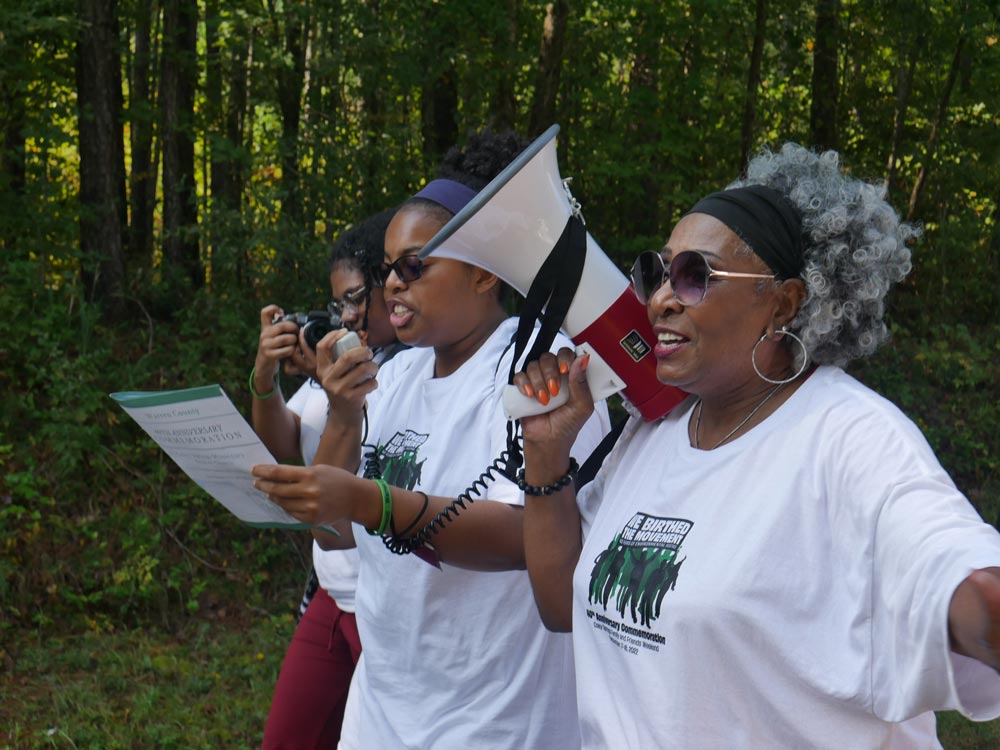 Dollie Burwell leads marchers during the commemorative celebration. Credit: EJ Oral History Project.
Dollie Burwell leads marchers during the commemorative celebration. Credit: EJ Oral History Project.
 The Warren County Environmental Action Team at the event. Credit: EJ Oral History Project.
The Warren County Environmental Action Team at the event. Credit: EJ Oral History Project.
Courtesy of the Southern Documentary Project at the University of Mississippi. Learn more about their upcoming documentary, Our Movement Starts Here.
There is an interconnectedness of movements that is clear in these storytelling examples. Whether in the fight for Civil Rights, Voting Rights, or Environmental Justice, the photojournalism, narrative, and preservation of song within these movements highlight a common experience, a common strategy, and a common fight. These are experiences and principles that remain pervasive today in the continued fights for health, wealth, and livelihood in many of the predominantly Black, Indigenous, and historically exploited corners of this country. And so, just as the young people of the 60s, 70s, and 80s did, we have an obligation now to continue to use story to drive forward on progress. We’ve seen its potential, and we know it works. Story not only gives power to the documented community but also to the wider public because of its ability to change minds and hearts.
As you work to create change in your own community, storytelling can be a key part of your strategy. Here are some suggestions on how:
As a great example of the “think multi-media” tip, over the last couple of years the Environmental Justice Oral History Project (EJOHP) has worked with the Rural Beacon Initiative to collect a series of oral histories in the historically Afro-Indigenous township of Piney Woods Free Union in North Carolina. This community is a rare example of Black land retention and economic sovereignty for Black folk in the U.S. South, producing organizers and activists who have gone on to participate in some of the most significant justice movements of the past decades. However, despite its rich agrarian history, its cultural history, and its placement as a likely Underground Railroad site, Piney Woods has remained hidden and disinvested.
The EJOHP developed the Piney Woods Free Union oral history collection to bring the community out of the shadows in an intentional and historically authentic manner. But the work didn’t stop there. The EJOHP also supported the production of an article published in Atmos Magazine and sponsored by Grist and the Center for Rural Enterprise. They also produced a mini-documentary, A Peek into Piney Woods, which breaks down the fundamental stories and legacies of Piney Woods Free Union from the perspective of a new generation of community organizers. The purpose here was to provide as many avenues for engagement of the Piney Woods story as possible, creating resources that the Rural Beacon Initiative could use to secure funding, tell their story, and garner credibility for their community investment work.
The EJOHP developed the Piney Woods Free Union oral history collection, a mini-documentary, and other media to bring the legacy of the town to a new generation of community organizers.
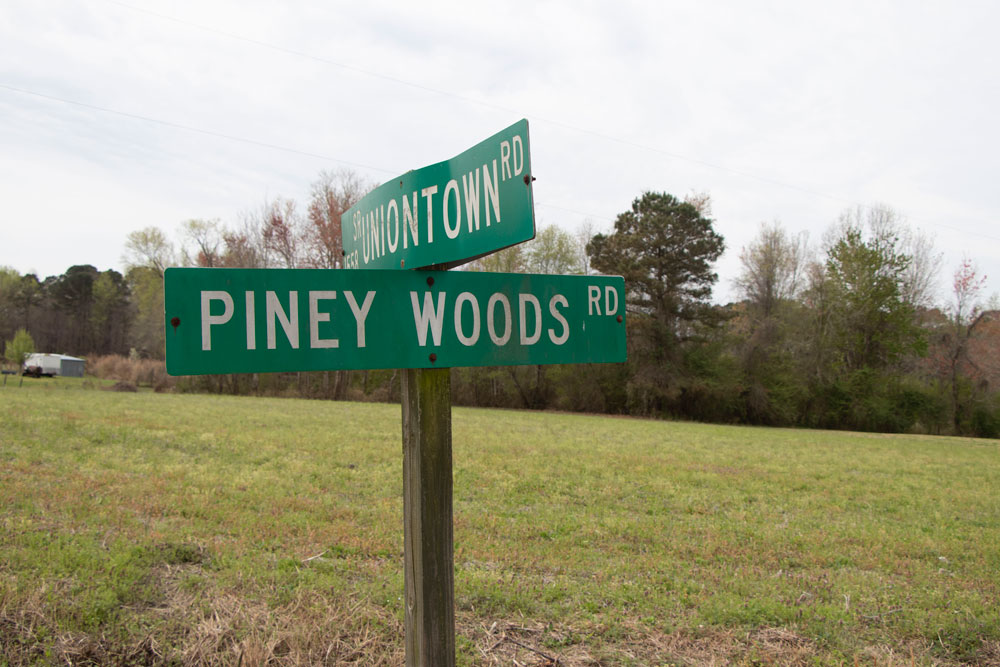 The street sign outside of Uniontown Church in Piney Woods Free Union. Credit: Ryan Parks. Courtesy of EJ Oral History Project
The street sign outside of Uniontown Church in Piney Woods Free Union. Credit: Ryan Parks. Courtesy of EJ Oral History Project
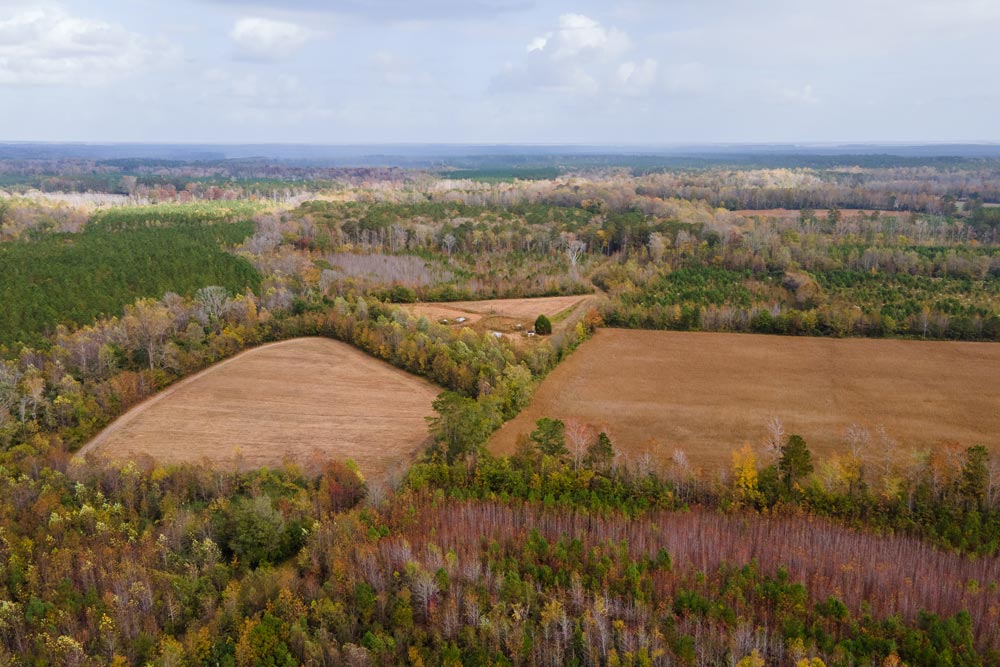 The Piney Woods Free Union Landscape. Credit: Ryan Parks. Courtesy of EJ Oral History Project
The Piney Woods Free Union Landscape. Credit: Ryan Parks. Courtesy of EJ Oral History Project
On November 5, 2022 and June 24, 2023, the Rural Beacon Initiative hosted the Free Union Harvest Festival, a twice-annual celebration of land, community, and crops. As a part of a larger documentation of Piney Woods Free Union and RBI’s Free Union Farms sustainability hub, this mini-documentary attempts to highlight the hidden history of Piney Woods Free Union in Jamesville, North Carolina as well as RBI’s work to revitalize the community and the Harvest festival as a launching point for the next phase of economic prosperity and cultural preservation in the community.
A quick example of the value of going beyond the obvious, 2024 marked the 50th anniversary of the Sampson County landfill in Roseboro, North Carolina. This landfill, the largest in the state, has existed in the same predominantly Black, agrarian neighborhood of Snow Hill as a major source of pollution, debilitating odor, and harm for generations. The community has fought for decades to remediate the harms, and pollution that has been linked to respiratory illness, cancers, and death for this once prosperous community.
In January, the EJOHP and the Uproot Project supported an article, co-published by the Assembly NC and Grist, about the 50-year protest history surrounding this landfill. Co-publication and even co-sponsorship of the piece was a deliberate attempt to get this story in as many places as possible.
In addition to the article, the EJOHP developed a brochure distilling the article and key dates for community members without easy internet access. The work could have stopped with one piece; that’s as far as a lot of journalists would have gone. But asking the community what they needed and pushing toward multi-media solutions, the work has instead resulted in an educational document that has been distributed to over 100 people and submitted as evidence against the landfill in public health meetings – a true resource for community building and capacity building. The EJOHP plans to continue working with Snow Hill to provide mailers and other helpful media as they continue to push against the landfill. Even mentioning this story in this blog post is an attempt at driving forward the Snow Hill protest work, another less obvious strategy for change
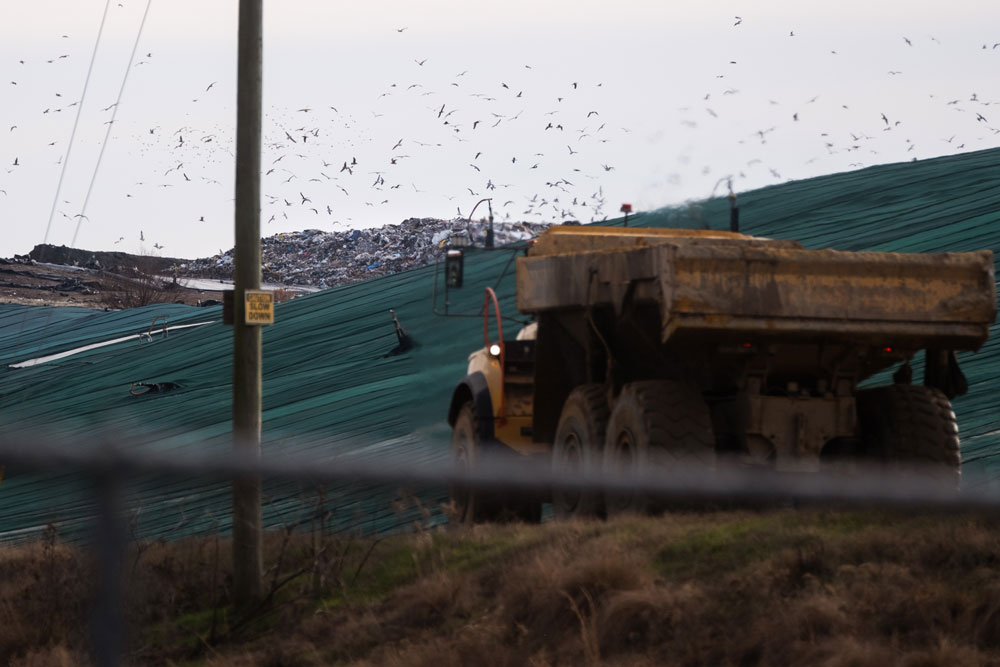 A Snow Hill landfill truck heading to the facility. Credit: Cornell Watson. Courtesy of EJ Oral History Project
A Snow Hill landfill truck heading to the facility. Credit: Cornell Watson. Courtesy of EJ Oral History Project
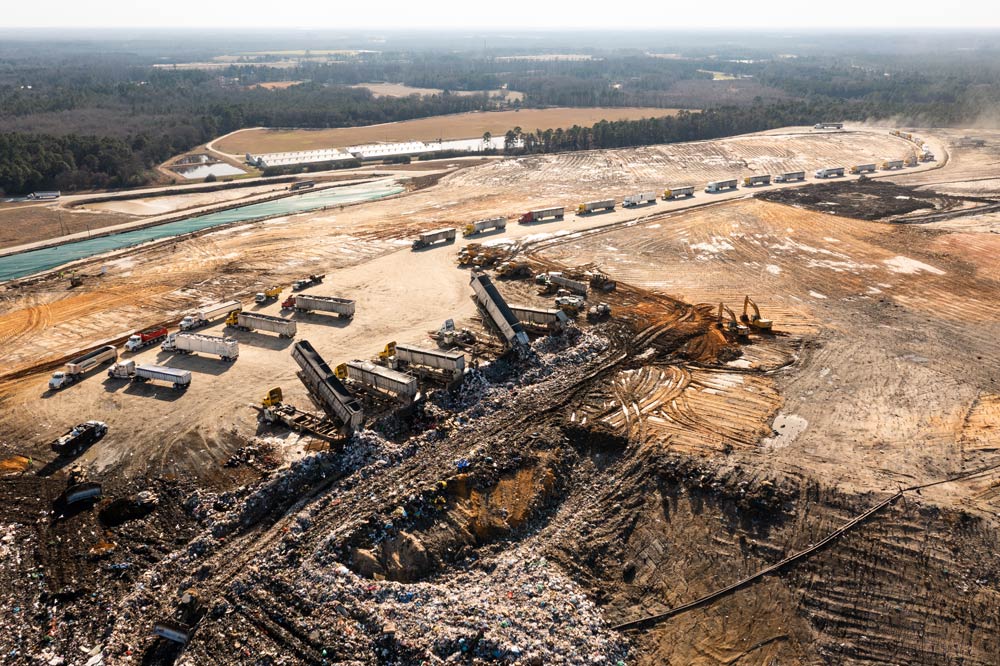 Landscape of the Snow Hill Landfill. Credit: Cornell Watson. Courtesy of EJ Oral History Project
Landscape of the Snow Hill Landfill. Credit: Cornell Watson. Courtesy of EJ Oral History Project
It’s important to remember as environmental organizers that we do not walk this path alone. We instead take up these movement batons from the leaders and legends who have been fighting for environmental, social, and climate justice well before us. We have a lot to learn from the resources and narratives they’ve left behind for us. And we have an obligation to continue to document their stories before they are lost to the world forever— for our own learning as well as our continued power building.
And let’s end by reiterating the power of individuals and youth. The movements outlined above that are now shining examples of the hope and power of collective action, were carried out in every instance by young people and people who — in many cases — did not know what they were doing. They were building the plane as they were flying it. Just as they did, so long as we try our best, do the most, and document everything, we shall succeed. Maybe even our oral histories will serve as inspiration for future generations.